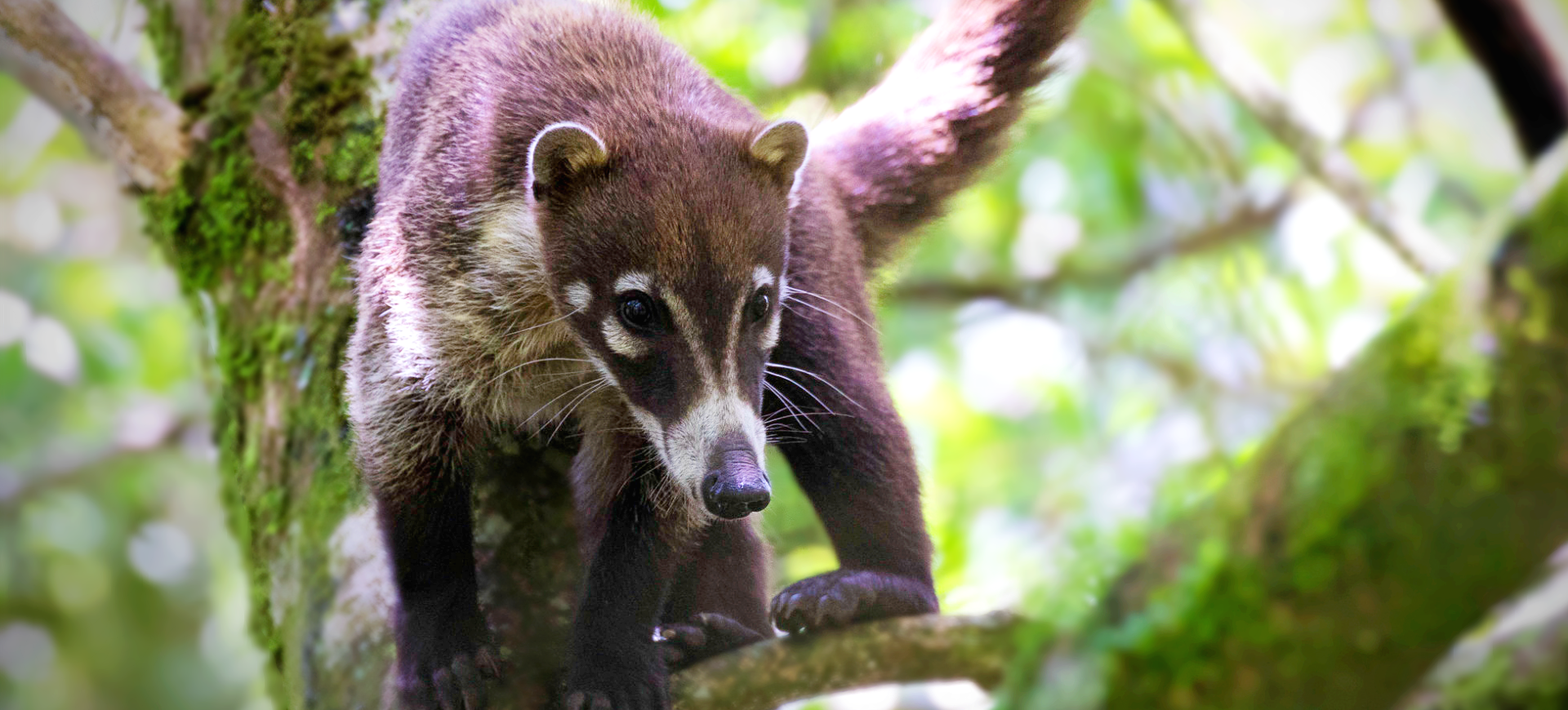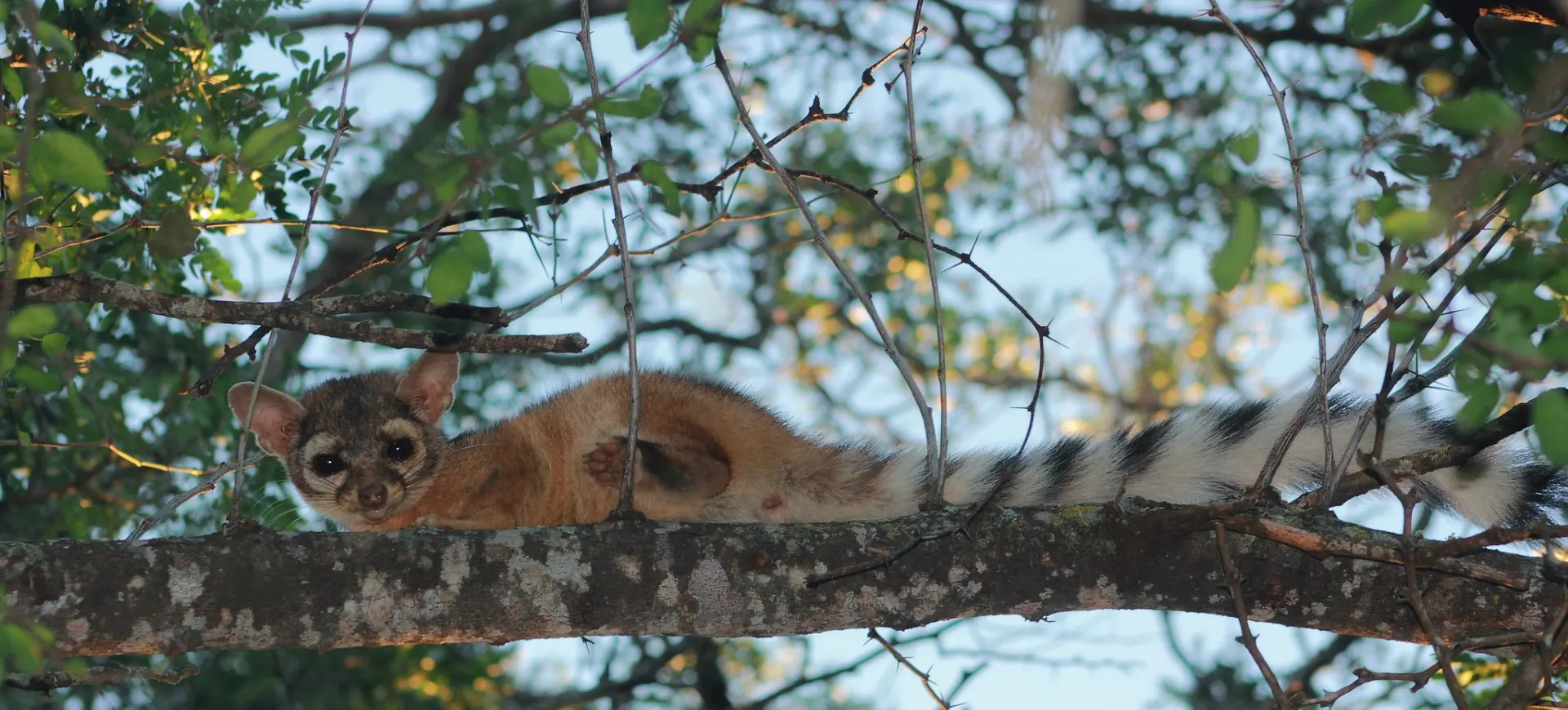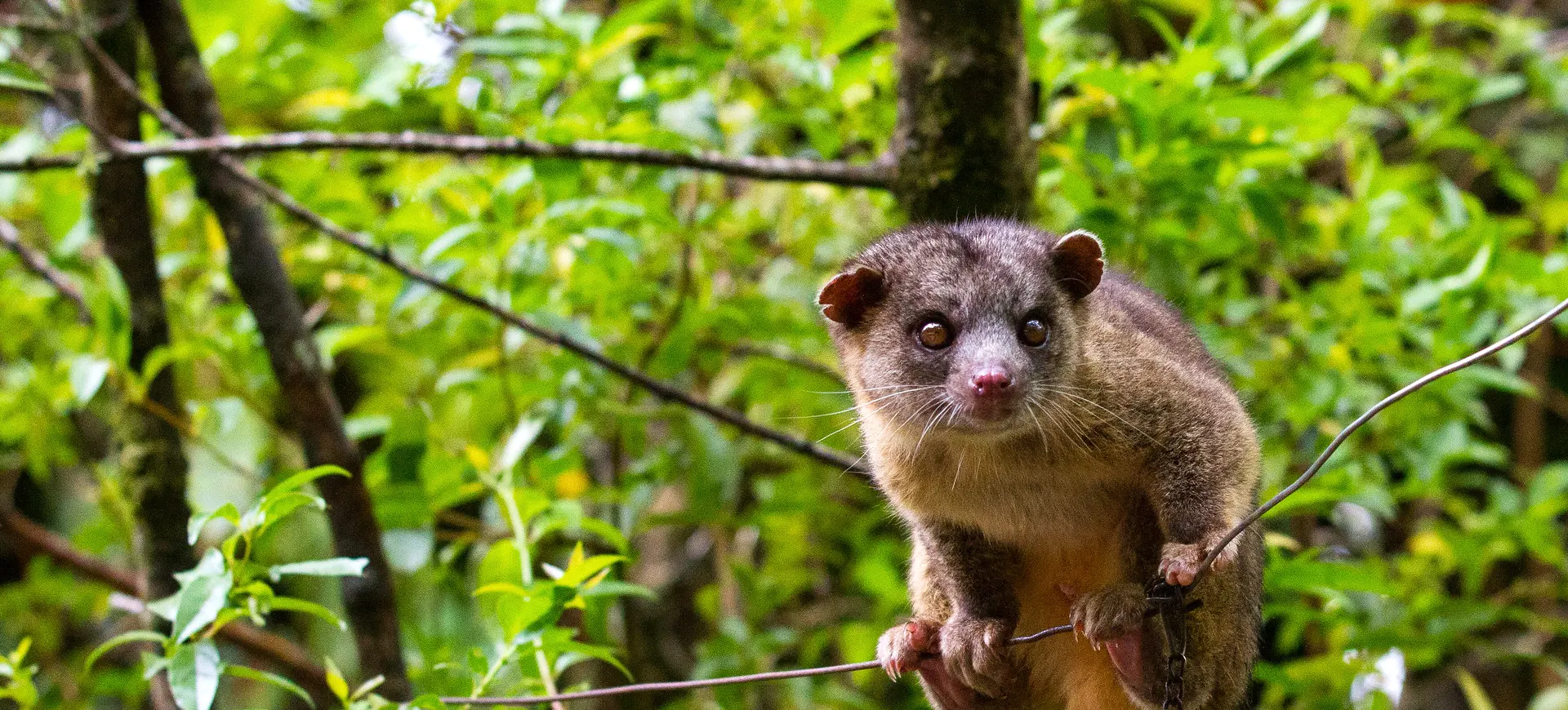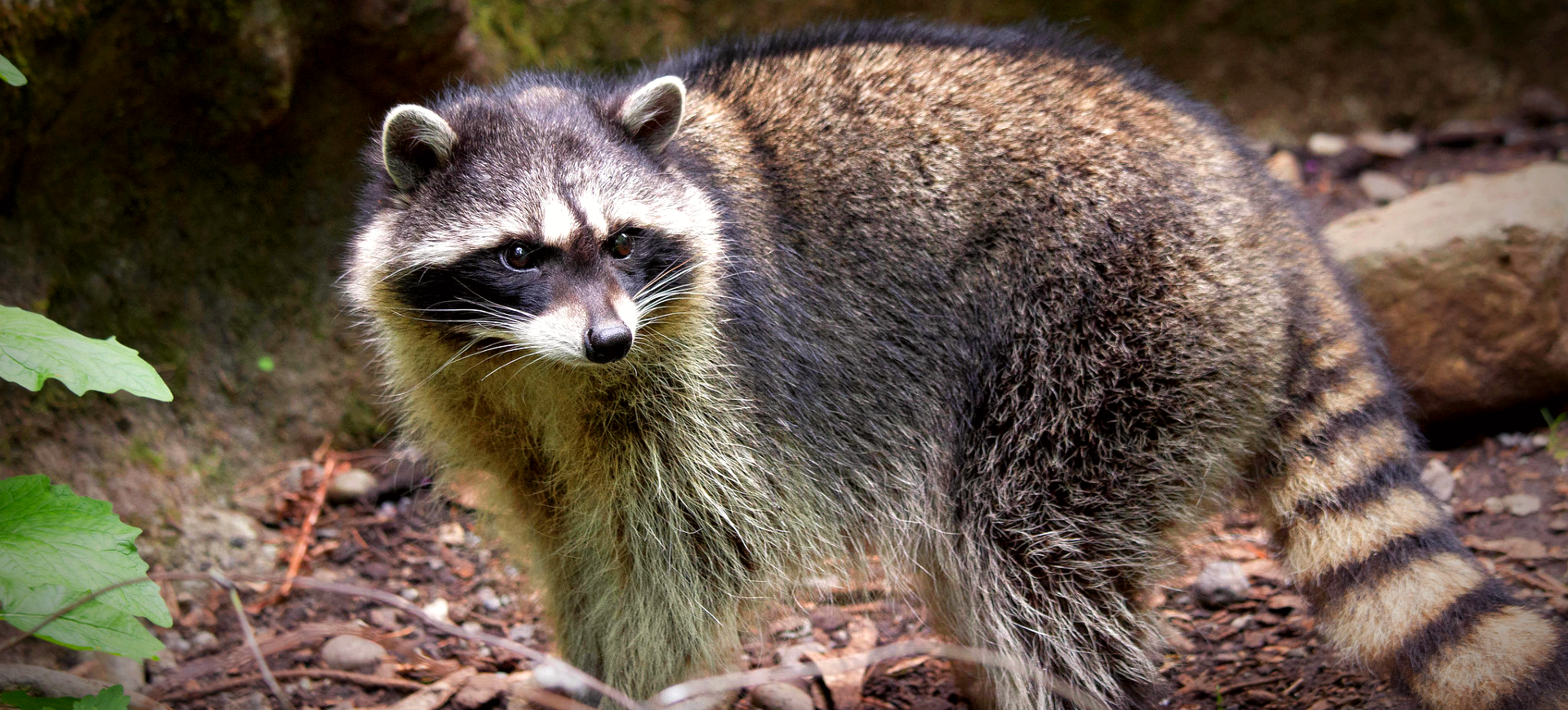Overview
The South American Coati, also known as the Ring-tailed Coati, is a fascinating creature that’s part of the raccoon family and native to South America. This mammal is a diurnal and arboreal creature, meaning it is active during the day and spends much of its time in trees. Coatis are known for their elongated snouts, which they use to sniff food, and their tails, which provide balance as they navigate the treetops.
Coatis have a flexible and adaptable nature that allows them to thrive in various habitats. These creatures exhibit a high degree of intelligence and curiosity, attributes that have led them to be considered quite a nuisance in areas where they interact with humans. Despite the occasional pesky reputation, the South American Coati plays a significant role in their ecosystems as predator and prey.
Despite their adaptability, the South American Coati’s existence is under threat due to habitat destruction and hunting. These challenges have necessitated conservation efforts to preserve this fascinating creature and its essential role in the ecosystem. Education and awareness about the South American Coati are vital for its survival and the overall health of its habitats.
Taxonomy
Kingdom
Phylum
Class
Order
Family
Genus
Species
Sub Species
Type
Physical Description:
The South American Coati is characterized by a lengthy body covered in a reddish-brown to grey coat. Their undersides are usually lighter, while the face features white markings around the eyes and dark markings around the snout. This animal has an elongated, flexible snout and sharp, pointed teeth adapted for an omnivorous diet.
Perhaps the most distinctive physical feature of the South American Coati is its long, bushy tail, which is almost as long as its body. The tail features black and brown rings and is typically held upright, especially when the animal is on the ground, serving as a balancing tool when climbing. Coatis also have strong, sharp claws for climbing and digging for food.

Lifespan: Wild: ~8 Years || Captivity: ~15 Years

Weight: Male: 11-18 lbs (5-8 kg) || Female: 8-12 lbs (3.5-5.5 kg)

Length: Male: 41-46 in (105-117 cm) || Female: 33-37 in (85-95 cm)

Height: Male: 10-12 in (25-30 cm) || Female: 8-10 in (20-25 cm)

Top Speed: 15 mph (24 km/h)
Characteristic:
Native Habitat:
The South American Coati is predominantly found in dense forests and woodlands throughout South America. This includes tropical rainforests, dry forests, and montane forests. Coatis are highly adaptive creatures and, as a result, can also be found in grasslands and scrublands, often near a water source. They prefer staying in areas with a high density of vertical structures, like trees and cliffs, which they use for foraging, resting, and escaping predators.
These animals are skilled climbers and spend a lot of their time in trees, where they forage, rest, and even nest. Coatis also dwell in areas with human presence, like farmlands and suburban regions. They are mainly active during the day, though they can exhibit nocturnal behaviors depending on food availability and predators’ presence.
Biogeographical Realms:
Continents:
Diet:
Diet & Feeding Habits:
The South American Coati boasts an omnivorous diet, consuming a mix of fruits, invertebrates, and small vertebrates. They are opportunistic feeders, eating whatever they can find in their surroundings. Insects, particularly ants and termites, comprise a substantial portion of their diet. They use their long, sensitive snouts to dig into the ground and their sharp claws to tear into logs and rocks in search of these insects.
Their diet includes fruits, nuts, honey, bird eggs, and small animals such as lizards, rodents, and birds. During certain seasons, fruits can make up to 90% of their diet. Coatis, while primarily foraging on the ground, can also climb trees to search for food. Their feeding habits are crucial in seed dispersal in the forest ecosystem.
Mating Behavior:
Mating Description:
The South American Coati mating system is characterized by seasonality and polygyny, with one male mating with multiple females. The breeding season typically falls between the start of the rainy and mid-dry seasons, usually from February to May. Adult males join female groups and compete for mating opportunities during this period.
Females are receptive to mating for a short period of just a few days. Following copulation, the male coati leaves the group, and the females rear their young alone. The gestation period is approximately 74-77 days, after which the females give birth to a litter of 2-7 young. The young ones are born in a nest in the treetops and are altricial, requiring substantial care from the mother.
Reproduction Season:
Birth Type:
Pregnancy Duration:
Female Name:
Male Name:
Baby Name:
Social Structure Description:
South American Coatis have a complex social structure. Females and their offspring form stable social groups of 5 to 20 individuals, known as bands. These bands are highly cooperative, engaging in communal activities like foraging, grooming, and defense against predators. On the other hand, adult males are solitary for most of the year, only joining the bands during the mating season.
Groups:
Conservation Status:
Population Trend:
The exact wild population size of the South American Coati is unknown. Still, it is widely acknowledged that their numbers are decreasing due to factors such as habitat loss, hunting, and road fatalities. The adaptability of the coati allows them to inhabit a wide range of environments, but these threats have resulted in localized population declines and even extirpations in some regions.
The South American Coati is a common species in captivity due to its engaging personality and intriguing behaviors. They are often found in zoos and as exotic pets. However, their care in captivity can be challenging due to their activity level, dietary needs, and health issues, which include obesity and dental problems.
Population Threats:
Habitat loss due to deforestation for agriculture, logging, and urbanization is a significant threat to the South American Coati. These activities destroy the coati’s habitat and isolate populations, leading to genetic problems and vulnerability to local extinctions. Hunting for their meat and fur is another considerable threat in some regions.
Furthermore, road fatalities pose a significant danger to coatis. Vehicles often hit them while foraging on roadsides or attempting to cross highways. The pet trade also threatens coatis as they are captured and sold as exotic pets. This practice often involves inhumane conditions and contributes to declining wild populations.
Conservation Efforts:
Efforts to conserve the South American Coati involve protecting their habitats and implementing policies to control hunting and the pet trade. Many areas within the coati’s range fall under protected areas like national parks and reserves, which provide some protection. However, effectively managing these areas is crucial to ensure they serve as secure habitats for the coati.
Public education and awareness programs are also essential for conserving the South American Coati. These initiatives aim to educate local communities and the broader public about the importance of coatis to the ecosystem, the threats they face, and the need for their conservation. They also emphasize responsible practices regarding interactions with wildlife, such as not feeding coats or keeping them as pets.
Additional Resources:
Fun Facts
- The South American Coati is a brilliant creature known for its problem-solving abilities.
- Their long, flexible snout can rotate up to 60 degrees in any direction.
- Despite being excellent climbers, coatis prefer to forage on the ground.
- Their strong jaws and sharp teeth allow them to crack even the toughest nuts.
- Coatis communicate using a variety of sounds, including grunts, chirps, snorts, and hisses.
- Their tail, which is almost as long as their body, serves as a balancing tool when climbing.
- Female coatis give birth in nests built in the treetops.
- Coatis have a keen sense of smell, which is about 13 times stronger than that of a human.
- They are skilled swimmers and will not hesitate to dive into a body of water to escape from a threat.
- Despite being part of the raccoon family, coatis are active during the day, unlike their nocturnal cousins.












